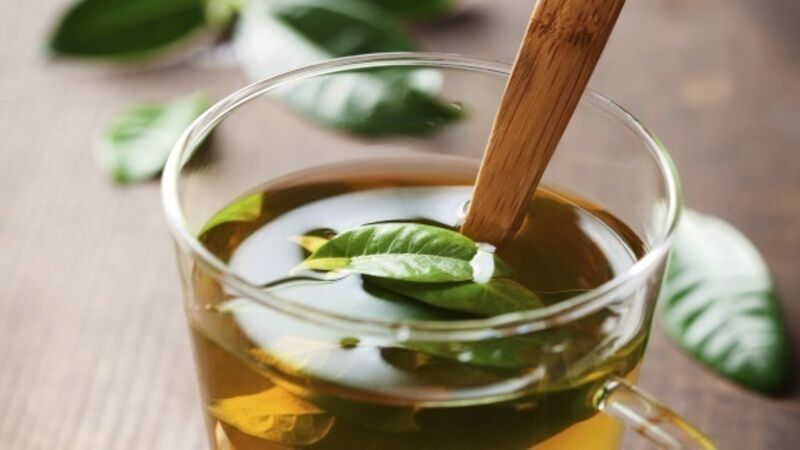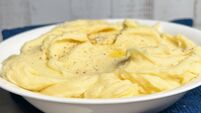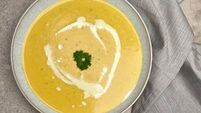May is just my cup of herbal tea

Why not consider making a herbal tea border ora collection of container teas? offers suggestions on what to plant to start your collection.
Legend has it that the Chinese emperor, known as Shan Nong (circa 2737 BC) favoured drinking water hot.
One day while having his midday beverage beside his prized camellia bushes, a wind rose up and blew a leaf into his cup.
So alluring was the aroma that the emperor decided not to discard the infusion, but to taste. The pleasantness of the sip enticed another and on completion, he felt refreshed and enlivened and decided to replicate the event for his next drink.
This was just as delightful and so a daily routine began and soon this leaf drink was adopted by his courtiers and a trend began.
In some versions of the legend, the Emperor, inspired by the energy-gifting leaf of the camellia, went on to explore other leaves and plant parts and developed a medicinal knowledge through his experiments.
And yes, in the canon of early Chinese medical texts, there is a book known as Shén Nóng Běnco Jīng aka the Materia Medica of Shen Nong, or sometimes referred to as The Divine Farmer’s Classic of Materia Medica, and full of many herbal remedies.
That book is really a collection of three treatises, not just a herbal handbook, but a study of sustainable agriculture and exploration of natural science — and a contemplation on spiritual life.
It is an expression of the Chinese art of yang shēng, “nurturing life”, and would in time inspire some aspects of Taoist philosophy and be embraced by Confucian and Buddhist teaching.
Also, it is nice to think of the ‘three teachings’ bonded and harmonised over a cup of tea.
Now I am not saying sip your tea like its HolyCommunion, but then again maybe one sip could be offered up to communion with your sacred self.
In this over busy and demanding and anxious world where hot chocolate adds appropriate mindfulness to get you to crave more sweet things, why can’t an everyday cuppa be a moment of relaxed self-acceptance.
Or even gift you a couple of centring minutes to opt out of the noise and wifi — t slurp or ahhhh can be the om or amen.
Tea was more than just serendipity, it was the fortuitous wind of inspiration that led to scientific exploration and understanding of plants and their healingattributes.
It was more than a beverage invented on a breezy day — it was a new mechanism for the delivery of medicine.
May is a great month to get some serious planting done and why not consider making an herbal tea border or a collection of container teas.
If you have them — you will use them and with many herbs, the fresh leaf contains more of the volatile oils and phenolic components that make herbal teas such a healthy option.
If you have read any of my books or caught me on Ireland AM, I praise the advantages of taking your medicine in a tea,
It’s easy to get and make, it’s a standard dosage (pretty much 1tsp chopped herbage per cup every time ), and it’s tried and tested.
So what can you plant now to start your collection?
Anise Tea
Pimpinella anisum has expectorant and anti-spasmodic actions that sees it utilised for respiratory and bronchial complaints — from coughs to asthma. It’s anti-microbial action is often employed in gargles against infections of the mouth and combined with its diuretic nature, addresses UTI’s.
Drinking anise tea can increase iron absorption and can be useful in remedying acute anaemia. It’s also a great one for culinary experiments.
Chamomile Tea
Chamaemelum nobile & Matricaria recutita is well known as a night time sedative and daytime antidepressant.
It has shown great results with general anxiety, insomnia and mild depression — in part due to the concentrations of apigenin, which binds to the benzodiazepine receptors in the brain in the same way Xanax and Valium do, but without the long-term side effects.
Smelling the aroma alone reduces levels of adrenocorticotropic hormones released by biological and physical stresses. Chamomile tea is highly regarded to treat all kinds of gastrointestinal disturbances — from digestive sluggishness to IBS and colitis.
Chrysanthemum Tea
Chrysanthemum morifolium & Chrysanthemumindicum is a refreshing and reviving tea,(provided you are not allergic to daisies or asters), and is utilised around the world as a body coolant in fever or prickly heat, and as a convalescence beverage for flu, viruses, colds and chest infections.
In traditional Chinese medicine it is recommended for longevity, to treat and clear the liver, to improve vision and to remedy hypertension and angina.
In Japan it’s used to regulate blood pressure, clear and strengthen lungs and to relieve sinusitis congestion. In Korea, it’s a pick-me-up, skin treatment, detox and headache relief.
Lemonbalm Tea
Melissa officinalis)is a great antiviral but also traditionally used to remedy indigestion, bloating and flatulence. The principles that give it its lemon citrus flavour — citral, citronellal and citronellol — are antispasmodic agents that work to calm the digestive and nervous system.
Those same agents make it useful to address menstrual cramps and also tension headaches and anxeity.
The nervine element also makes it suitable to remedy IBS and other stress-related illnesses or a stress-related flare up of an underlying illness.
Peppermint Tea
Mentha piperita has long standing as a respiratory support — beneficial to relieve allergic rhinitis, sinusitis, cold-related stuffiness and seasonal allergies.
Its menthol molecules help calm inflamed mucous membrane in the sinuses and actively thin mucus and decongest phlegm and contribute an anti-tussive effect. It contains several flavonoid glycosides — including eriocitrin, hesperidin and luteolin-7-O-rutinoside — that exert an inhibitory effect on histamine release from mast cells. Peppermint tea is also suitable to relieve tension and migraine headaches by opening up constricted blood vessels in the brain.
Yarrow Tea
Achillea millefolium is used topically as a skin tonic, the salicylic acids content is analgesic and its tannins make it strongly astringent, other constituents are antimicrobial and speed healing.
Internally, Yarrow is most often used as a bitter tonic that helps digestion but with its carminative, anti-inflammatory and antispasmodic effects, it is suitable for a range of stomach upsets.
There is a tradition of use to ease menstrual cramps and attenuate symptoms of PMS and menopause.
I hate throwing in disclaimers but there is always the possibility of an allergic reaction to a phyto-constituent of any herb and also, some interaction with prescription medications and OTC (over the counter drugs), intensifying absorption, increasing the activity or cancelling out the effects, and then there is the issue of pregnancy.
So before you imbibe, use common sense.








